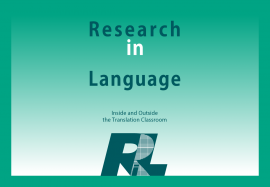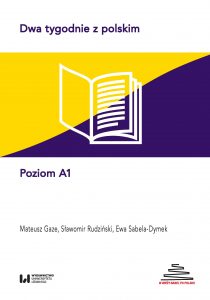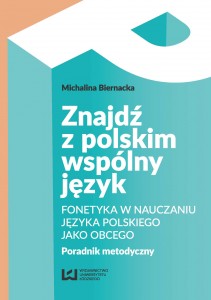Research in Language | Vol. 20.1 & 20.2
Opublikowano: 9 stycznia 2023

Zapraszamy do lektury dwóch nowych numerów czasopisma naukowego “Research in Language”. Kwartalnik publikuje artykuły badawcze i recenzje książek z zakresu fonetyki, fonologii, morfologii, składni, semantyki i pragmatyki, ale także przedstawiające wyniki badań różnorodnych aspektów języka: poznawczego, psychologicznego, instytucjonalnego czy społecznego, prowadzonych wielowymiarowo i interdyscyplinarnie.
Redaktor naczelną czasopisma jest Prof. UŁ dr hab. Iwona Witczak-Plisiecka.
Anna Jarosz, Iwona Witczak-Plisiecka
The text reviews selected current issues related to native and non-native accents of English, including the status of English as a global language, the value of varieties of English and the question of a possible supremacy of one accent over other varieties. The text links theoretical and applied issues addressing the question of which variety should be used in EFL education. Focusing on the phonetic dimension it weights the conflicting reasons given in classic works, such as Kachru’s and McArthur’s to eventually point to novel research programmes as exemplified in other texts included in the special issues of Research in Language, i.e. vol. 20, issues 1 and 2, most of which were inspired by Accents 2021, an annual conference organised by the Department of English Language and Applied Linguistics, Institute of English Studies, University of Lodz, Poland.
L2 Accentedness and Language Self-Esteem in Foreign Language Learning
Magdalena Szyszka
Developing Unbiased Teacher Identity in Pluri-Accent Reality: Research-Based Classroom Activities
Kristýna Červinková Poesová, Klára Lancová
In the current pilot report, we draw on and further develop our previous research examining pre-service teachers’ attitudes and beliefs about accents, in which we proposed a pedagogical intervention reflecting certain aspects of our research outcomes, mainly the positive trend of embracing one’s non-nativeness. A set of four classroom activities, namely Nativeness perception test, Four corners, Bank of experiences and Sociodynamic teacher, were incorporated into three different online graduate courses in the winter and summer semesters 2020/2021 at the Department of the English Language and Literature, Faculty of Education in Prague. The piloting process was partly replicated in face-to-face classes of the following academic year. The overarching goal was to raise awareness of accent variation, especially in such a linguistically homogenous country as the Czech Republic and cultivate future teachers’ ability to address accent-related issues confidently, objectively and sensitively. The subsequent scrutiny of participants’ recorded discussions, written and/or oral feedback, submitted tasks as well as teachers’ observations indicated increased awareness of accent variability and a raised level of pedagogical confidence in approaching accent in the classroom context. Particularly, the respondents proved to be highly creative when devising adequate and supportive reactions to imagined negative comments related to accents or preventing them by specifically designing their lesson plans. Furthermore, the pedagogical intervention was appraised by the participating graduate students in their reflective assessment one year later.
Speech Rhythm in English and Italian: an Experimental Study on Early Sequential Bilingualism
Vincenzo Verbeni
The study investigates the dynamics of speech rhythm in early sequential bilingual children who have access to Italian-English immersion programs. The research focused on the Italian and English semi-spontaneous narrative productions of 9 students, aged between 6;7 and 10;11 and distributed across three different classes (Year 1, Year 3, Year 5). Their speech was recorded and subject to an interval-based analysis via computation of %V/ΔC, PVI and Varco metrics. The retrieved metrics underwent within-group and between-group one-way ANOVAs in order to identify valuable cross-linguistic variations among children of the same age and statistically significant differences between different age groups (Y1, Y3, Y5). The results appear to support a stress-centered interpretation of speech rhythm: according to this view, all languages could be arranged on a stress-timed continuum in which “syllable-timing” is marked by sparser occurrences of (regular) prominence due to the relative absence of vocalic elision and consonantal complexity. Indeed, the comparative analysis drawn between the normalized vocalic indexes of Y1, Y3 and Y5 students revealed a statistically relevant increase in vocalic variation phenomena both in Italian and in English. Moreover, Y1 and Y3 consonantal scores were comparatively higher in the Italian sample: it will be discussed how unpredictable stress-timed patterns can arise as a function of proficiency, speech-rate and age-related disfluencies.
English Phonetics Course: University Students’ Preferences and Expectations
Marta Nowacka
This paper examines the perspectives of Polish university students of English (n=110) on selected aspects after the pronunciation instruction they underwent during their phonetics course. It shows qualitative questionnaire results obtained by means of four open-ended statements. It sheds light on: English accent preference, reasons why they favoured and disfavoured the course and expectations from the course tutor. The students reported a positive impact of the training on their speaking and overall English/language skills, sounding native-like, good, and being understood. They admitted to disliking rules, theory of phonetics, unexpected pronunciation of words. In addition, the expected responsibilities of a pronunciation tutor comprised: correction of students’ pronunciation and helping them improve this skill. It confirms that the nativeness principle to pronunciation learning still prevails as the students wish to sound nativelike and expect the teacher to give them corrective accuracy-based feedback.
Arab Efl Learners’ Stress of Compound Words
Safi Eldeen Alzi’abi
Compound words are ubiquitous in English. Stressing compounds is difficult for EFL learners and native speakers, especially when the meaning is not a sum of the constituent parts. This study explores Arab EFL learners’ stress strategies and outlines their difficulties. It examines whether any of these factors (a) word class, (b) orthography, (c) understanding of phonetics and phonology, (d) age and (e) grade point average (GPA) influence their behaviour and levels of success. It involves 130 second and third-year Jordanian English majors in reading 50 opaque non-frequent compound words, 25 with right-stress and 25 with left-stress. The majority opted for right-stress, producing about half of the stimuli correctly. They right-stressed more often in compound verbs, nouns and adjectives of all spelling forms. Their performance was slightly influenced by the study of phoneticsandphonology, training in stress and GPA. However, there was no noticeable relationship between their stress performance and age. Notably, the subjects needed more training in compound word stress production.
W numerze 20.2:
Student-Teacher Conferences in an English Pronunciation Course: Goals, Characteristics and Views
Veronica G. Sardegna
Student-teacher conferences are considered an effective pedagogical tool for individualized writing instruction. Yet, little is known about the goals, characteristics and perceptions of student-teacher conferences for individualized English as a second language (ESL) pronunciation instruction. This article presents an exploratory study on student and instructor perceptions of mandatory student-teacher conferences in a semester-long ESL pronunciation course. Data were gathered from 24 college ESL students and five experienced ESL instructors via pre-/post-instruction read-aloud tests, four questionnaires and a focus group discussion. The results indicated pronunciation improvement during the course and participants’ overall satisfaction with the learning outcomes, goals, format and characteristics of the conferences. Participants’ views on benefits, drawbacks, and recommendations for these one-on-one meetings revealed valuable insights for pronunciation instructors.
Agnieszka Bryła-Cruz
The aim of the present paper is to shed more light on using L1 (Polish) orthographic spelling to represent the pronunciation of English words in English-Polish dictionaries (e.g. journey /dżerni/, ship /szyp/) and discuss multiple drawbacks of this practice. While there are numerous advantages of using the International Phonetic Alphabet (IPA) in foreign language teaching, some Polish lexicographers insist on, what they call, a “simplified” phonetic transcription. In my paper I conduct an overview of three English-Polish dictionaries which use orthographic transcription instead of the IPA and exemplify inevitable confusion and serious problems they present the learner with. The analysis reveals that orthographic transcription intensifies interference between L1 and L2 and contributes to the fossilization of the most persistent mispronunciations stemming from phonetic transfer. Inconsistent and inaccurate transcription prevents learners from spotting patterns and rules (such as e.g. non-rhoticity, vowel reduction, silent letters, etc.). It is argued that relying on ordinary spelling rather than the IPA is a short-sighted alternative which presents more problems than solutions.
Łukasz Stolarski
Englishville: a Multi-Sensorial Tool for Prosody
Kizzi Edensor Costille
Research has shown that prosody plays an important role in the intelligibility, comprehensibility and accentedness of non-native discourse (Munro and Derwing, 1995, 1998). Yet prosody is deemed difficult to teach (Setter et al., 2010). Previous studies have used software such as PRAAT (Setter et al., 2010, Olson, 2014, Imber et al., 2017,) but they can be complex to use (Setter et al., 2010; Setter and Jenkins, 2005). Could a more comprehensive tool be useful to L2 learners? Englishville is a website where it is possible for the learner to see a real-time 3D spectrogram.
An experiment was set up to determine whether multi-sensorial input, available via Englishville can help learners of English. Eight French students enrolled in a BA in English took part in this initial trial experiment (2 per group). They were divided into four groups. The corpus is divided into 2 parts. The first focuses on lexical word stress (72 words) and the second on intonation in 30 short sentences. The corpus was recorded by a female native British speaker. All participants had one trial at the beginning of the experiment to familiarise themselves with the tool and they all read and recorded the words and phrases as they appeared on the screen. The first group only had access to this text (no input) before recording their own productions whereas the other 3 groups received supplementary input. Group 2 read the text and heard the corresponding audio (audio input), group 3 read the text and saw the corresponding 3D spectrogram (visual input) and group 4 read the text, heard the audio and saw the corresponding 3D spectrogram (multi-sensorial input).
An auditive analysis leads us to believe that both hearing speech and seeing the corresponding spectrogram is beneficial, especially for intonation. Positive results came from the students’ feedback; they generally found the tool useful, easy to use, fun and interesting.
Microsoft Reading Progress as Capt Tool
Marek Molenda, Izabela Grabarczyk
The paper explores the accuracy of feedback provided to non-native learners of English by a pronunciation module included in Microsoft Reading Progress. We compared pronunciation assessment offered by Reading Progress against two university pronunciation teachers. Recordings from students of English who aim for native-like pronunciation were assessed independently by Reading Progress and the human raters. The output was standardized as negative binary feedback assigned to orthographic words, which matches the Microsoft format.
Our results indicate that Reading Progress is not yet ready to be used as a CAPT tool. Inter-rater reliability analysis showed a moderate level of agreement for all raters and a good level of agreement upon eliminating feedback from Reading Progress. Meanwhile, the qualitative analysis revealed certain problems, notably false positives, i.e., words pronounced within the boundaries of academic pronunciation standards, but still marked as incorrect by the digital rater.
We recommend that EFL teachers and researchers approach the current version of Reading Progress with caution, especially as regards automated feedback. However, its design may still be useful for manual feedback. Given Microsoft declarations that Reading Progress would be developed to include more accents, it has the potential to evolve into a fully-functional CAPT tool for EFL pedagogy and research.
Use of L2 Pronunciation Techniques in and Outside Classes: Students’ Preferences
Ewa Kusz, Judyta Pawliszko
The present study describes the level of effectiveness of both traditional and computer-assisted second language pronunciation techniques from the students’ perspectives. By traditional techniques we mean those activities which make use of phonetic alphabet, including transcription practice, detailed description of the articulatory systems, drills (e.g. minimal pair drills), reading aloud, tongue twisters, rhymes, etc. (Hismanoglu and Hismanoglu 2010: 985). On the other hand, computer-assisted techniques include activities based on listening and imitating tasks, which use technology, such as self-imitation practice, recordings of L2 learner’s, visual aids, and automatic speech recognition tools. The main aim of this study does not aim to classify L2 pronunciation methods by allocating them to previously mentioned categories but rather attempts to examine the intricate relationship between students’ knowledge, perceptions, attitudes and their most preferable practices which, in their opinion, result in improvement of their L2 pronunciation.
118 study subjects were asked to complete four main questions, within which tasks based on the Likert-scale items gathered data about the students’ most preferable L2 pronunciation teaching and learning techniques. The students were asked to create their own list, starting from the most useful to the least beneficial techniques. The last task was an open-ended question about other techniques than mentioned in the questionnaire.
The analysis of the obtained data involved a two-stage process: a) data segmentation; and b) techniques categorisation. The first step was to select pronunciation learning techniques in terms of their frequency and use and to adjust them to the research group. The second stage, techniques categorisation, was based on a careful analysis of the answers given by the students in the questionnaire. Following that, five categories were distinguished: (1) traditional and used only in the classroom, (2) traditional but also used in distance learning, (3) computer-assisted but used only in the classroom, (4) computer-assisted and also used in distance learning, (5) innovative: combining students’ needs and available online.
Highlighting the prominence of pronunciation in acquiring communicative competence, the authors propose their own, innovative suggestions for the future creation of teaching materials.
Komentarze
Ten post dostępny jest także w języku: angielski





